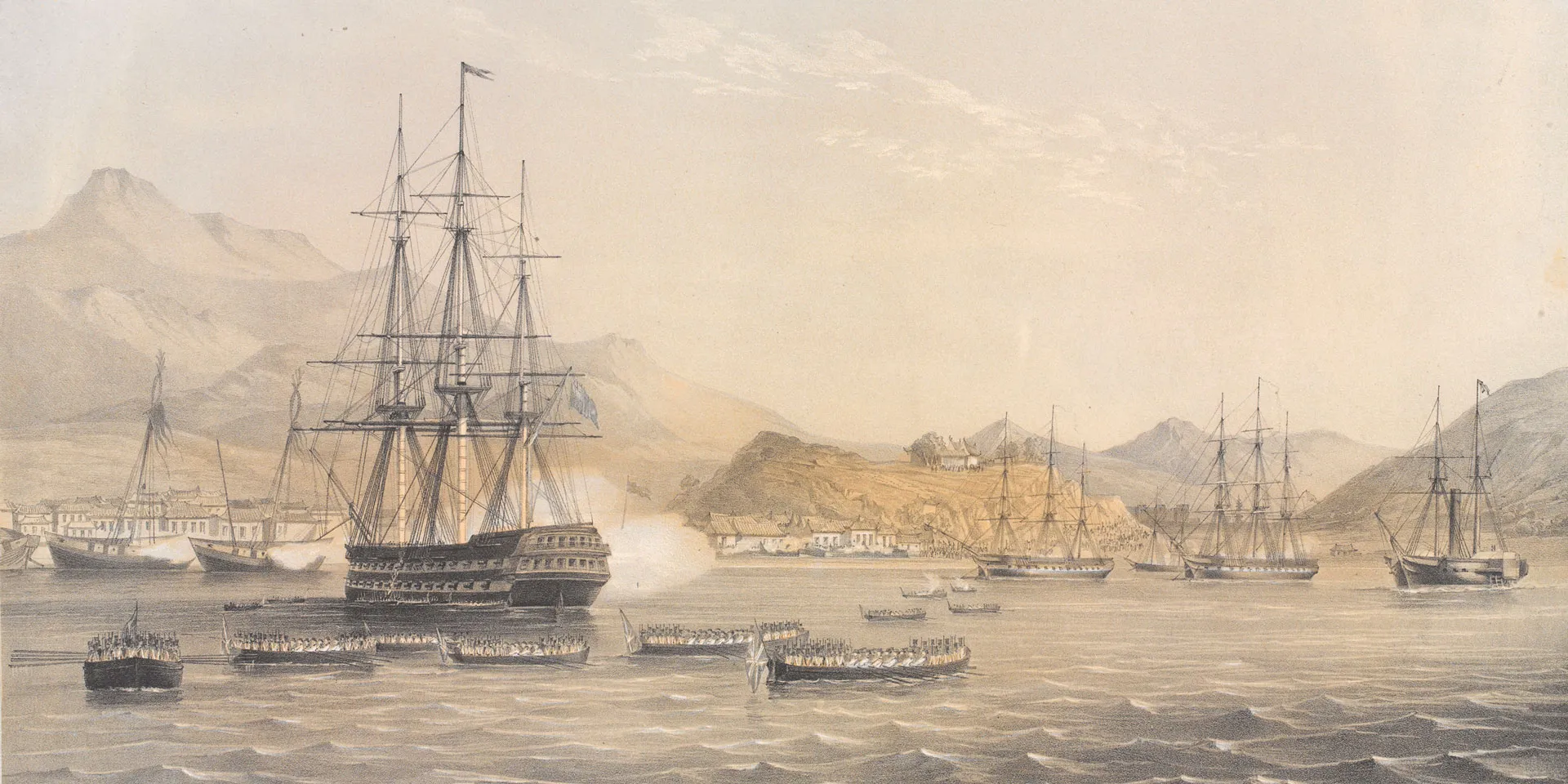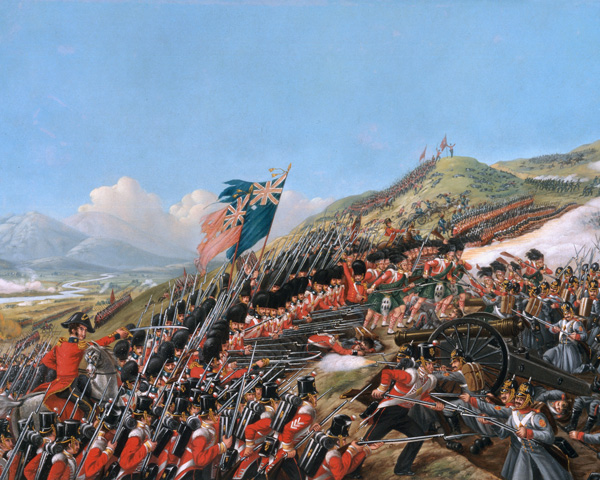Explore more from Regiments and Corps
49th (Princess Charlotte of Wales’s) (Hertfordshire) Regiment of Foot
3 minute read
Origins
In 1655, during the Anglo-Spanish War (1654-60), Britain captured the island of Jamaica from Spain. Rather than using regular infantry, it recruited independent companies to defend the island and suppress potential slave revolts.
In 1743, eight of these companies were combined to form a regiment under the colonelcy of Edward Trelawny, the governor of the island. Over the following four years, this unit absorbed four more independent companies. It was originally granted the number 63, before rising to 49 in the order of precedence in 1751.
In 1764, the regiment left Jamaica for the first time, sailing to Ireland for garrison duties.
North America
In 1772, it moved to Canada, then three years later to Boston. During the American War of Independence (1775-83), the regiment fought at Brooklyn (1776), Fort Washington, Brandywine Creek (1777) and Germantown (1777), before moving to the West Indian theatre in 1778.
It returned to Ireland in 1780. Two years later, it was granted a territorial association with Hertfordshire.
French wars
In 1788, the regiment returned to the West Indies, first to Barbados and then to Jamaica on the outbreak of the French Revolutionary War (1793-1802). Its flank companies were then detached to fight in amphibious landings on Saint-Domingue (now Haiti) in 1793 and at Ostend in 1798.
Meanwhile, the main body of the 49th was used to put down the naval mutiny at the Nore (an anchorage in the Thames Estuary), before the regiment reunited for the Helder campaign in the Netherlands (1799).
In 1801, the unit fought as marines at the Battle of Copenhagen. Then, in 1802, it redeployed to Canada. It remained there until 1815 and saw service on the American frontier during the War of 1812 (1812-15).
Royal link
On its return to Britain, the regiment guarded members of the royal family at their residence in Weymouth, including Princess Charlotte of Wales, the daughter of the Prince Regent (later King George IV).
In 1816, prior to moving on to Ireland and then South Africa, it was renamed in her honour.
Victorian era
In 1828, it arrived for its first Indian posting, which lasted 15 years. That deployment also included service in China during the First Opium War (1839-42), a role that gained it a ‘China Dragon' on its Colours and badge.
The regiment was awarded its first three Victoria Crosses for service during the Crimean War (1854-56), where it saw action at Alma (1854), Inkerman (1854) and Sevastopol (1855).
It then spent the next two decades garrisoning Barbados, Ireland and India. Its final independent overseas posting was to Gibraltar in 1881.
Legacy
That same year, it was merged with the 66th (Berkshire) Regiment of Foot to form The Princess Charlotte of Wales’s (Berkshire Regiment).
Regimental museums
The National Army Museum works with a network of Regimental and Corps Museums across the UK to help preserve and share the history and traditions of the Army and its soldiers.
Discover more about the 49th (Princess Charlotte of Wales’s) (Hertfordshire) Regiment of Foot by visiting The Rifles Berkshire and Wiltshire Museum in Salisbury.












